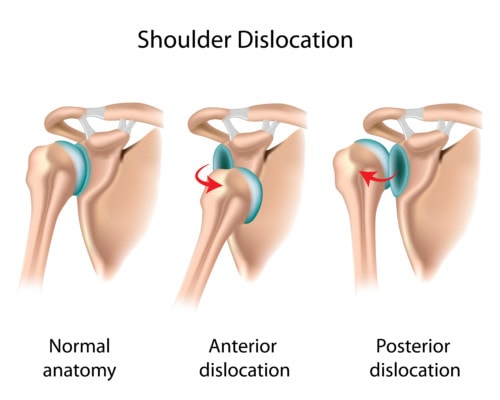Cut Your Shoulder Dislocation Surgery Recovery Time
One way to cut your shoulder dislocation surgery recovery time is to skip the surgery and opt for advanced interventional orthopedics instead. That’s what Penn State college lacrosse player Matt Florence did. Facing huge surgery with massive loss of playing time, he ditched the 1990s approach to his shoulder problems and opted for new technology from the 21st century—ultra-precise placement of his own stem cells into the problem areas.
What Is Shoulder Instability?
The shoulder has a structural problem. It has to be able to move in many different directions while remaining stable and aligned. To do this, your body has a ball in a shallow socket. It surrounds that by a lip around the socket (labrum) and then adds in strong ligaments, some of which get tight with specific movements while others remain lax. In addition, strong muscles precisely fire and provide stability in a symphony of movement with submillimeter precision.
Instability commonly happens in young athletes when trauma to the ball in the socket causes the labrum or ligaments to get damaged. The patient is then often left with a shoulder that can dislocate and with damage to the labrum.

Alila Medical Media/Shutterstock
What Are Your Surgical Options and Recovery Times?
Surgery for instability is a big deal. First, repairing the labrum often means detaching and then reattaching important tendons, like the biceps. In addition, the labrum is notoriously difficult to completely heal with surgery. In addition, sewing the stretched-out ligaments back together or burning them in surgery can result in a shoulder capsule that’s too tight and places too much pressure on the cartilage of the shoulder joint.
Shoulder dislocation surgery recovery time can be anywhere from 3–6 months with limited movement of the joint. In addition, that season is likely done, with full return to sports, if it happens, at about 6–12 months. Suffice it to say that these big shoulder surgeries have big recovery times. Is there a better way? Let’s see what college lacrosse player Matt Florence chose and compare and contrast.
Matt’s Choice—Skip Surgery!
Matt is a 22-year-old lacrosse player at Penn State with a 5-year history of shoulder issues, who began playing football in high school. He was seen by Dr. Schultz in November. Over the years, his shoulder dislocated toward the back many times. His MRI showed a reverse Hill-Sachs deformity, a SLAP tear, and swelling in the bone. Basically, his bone had been traumatized, and his labrum was injured, in addition to having loose and stretched-out ligaments.
Dr. Schultz treated Matt with the Regenexx-SD same day stem cell treatment around Thanksgiving. He precisely mapped out where the cells would go and then injected into these areas using both ultrasound imaging and C-arm fluoroscopy. No surgery. At about the time that most surgical patients would be progressing to more intensive rotator cuff strengthening in physical therapy and still a long way off from playing, here’s an e-mail from Matt’s mom:
“Dr. Schultz,
I just wanted to share this article with you, please look at photo #26. #8 is Matt scoring the winning goal for Penn State lead over Cornell. He had 2 great goals!
THANK YOU…he feels great:)
Hope all is well with you,
Megan
http://www.insidelacrosse.com/article/photos-penn-state-edges-cornell-in-game-of-runs/34025“
The image is above. Matt scored two goals in this win over Cornell!
The upshot? Matt dodged the surgery bullet and got back to play much sooner than if he had opted for surgery to treat his dislocating shoulder with labral tears and bone lesions. How’s that for shoulder dislocation surgery recovery time?
To find out if you might be a candidate for a Regenexx stem cell procedure, complete our Regenexx Procedure Candidate Form online.

NOTE: This blog post provides general information to help the reader better understand regenerative medicine, musculoskeletal health, and related subjects. All content provided in this blog, website, or any linked materials, including text, graphics, images, patient profiles, outcomes, and information, are not intended and should not be considered or used as a substitute for medical advice, diagnosis, or treatment. Please always consult with a professional and certified healthcare provider to discuss if a treatment is right for you.
